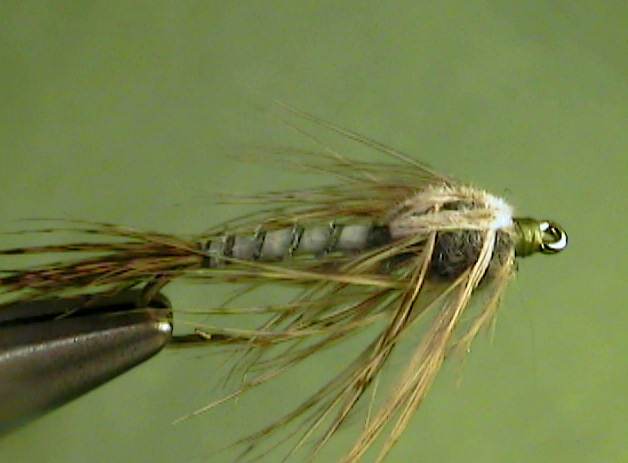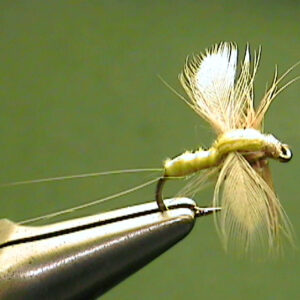Hook Size: 14
freestone streams. Depending on the stream and its elevation, these mayflies
can hatch from the last of June until the first couple of weeks in September.
Being a clinger nymph, they are better suited to fast moving water with plenty of
oxygen.Many of the hatches we have noticed were not heavy; however, most of them
took place when few other mayflies were hatching. That could make them very
important to imitate. There are also streams that have heavy hatches but they
are not very common.
The nymphs of this mayfly are fairly easy to identify. They only have two tails.
There is another similar but more plentiful mayfly, the Epeorus albertae. Just to
be technically correct, there is another similar genus that only have two tails
called the Ironodes. It too is far less plentiful.
The nymphs usually stay well hidden down between and under the rocks in the
bed of the stream until it get near the time for them to hatch. When the nymphs
are ready to hatch, they will move from their normal fast, riffle type of water to
nearby water that is slower moving such as pockets behind boulders and pockets
along the banks. This movement is often only a yard or two, not ten or twenty
yards.
Presentation:
Like most clinger nymphs, the Slate Dun nymphs are really not very available to
trout. They can be caught up in the currents and eaten by trout but as far as we
are concerned, the only time a nymph imitation is effective, is just prior to the
hatch.
We fish the nymph imitation in an upstream or slightly up and across direction in
the fast pocket water or riffles where they are found. Concentrate on fishing the
edges of the slow water behind boulders and pockets along the banks where
they move to hatch. Keep the nymph right on the bottom using plenty of weight.



